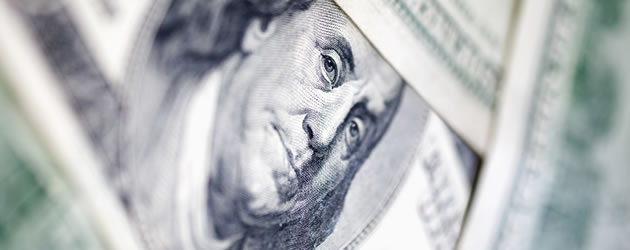
As US spending cuts and international economic data triggers market movement, an analyst argues that by 2015 the US Dollar will be trading in the region of 115 Japanese Yen and the Euro will hit 1.10.
The US Dollar Exchange Rate was trading in the region of 0.7689 against the Euro as of 14:45 pm GMT
On Friday the series of highly anticipated automatic US spending cuts came into effect. There followed an initial surge of volatility, during which the Euro fell to a 2 ½ month low against the US Dollar and the British Pound sank to a 2 ½ year low. The Japanese Yen also lost ground against its safe haven rival as the increasing odds of more aggressive stimulus in Japan triggered Yen fluctuations.
At the same time several economic factors supported the ‘Greenback’, such as disappointing economic news from the Eurozone and China and more positive US data. Since then political uncertainty in Italy – the fourth largest economy in the 17 nation currency bloc – and the anticipation of Wednesday’s GDP figures for the Eurozone showing contraction have kept the Euro trading within the region of a three-month low against its American counterpart.
Meanwhile, more severe-than-forecast contraction in the UK construction sector pushed Sterling to within 0.4 per cent of a 2 ½ year low against the ‘Greenback’.
The Canadian Dollar also lost ground against its neighbouring currency as investors braced themselves for the Bank of Canada’s rates decision and Canadian employment data, due out Wednesday and Friday. But with economists expecting an improvement in the nation’s jobs figures the Canadian Dollar could rebound. As the ‘Loonie’ shed a further 0.2 per cent against the US Dollar this afternoon head Oanda Corp analyst Dean Popplewell asserted: ‘I expect data out of North America, particularly the US, to be more positive, more risk-friendly, and I don’t necessarily see the US Dollar appreciating on the back of that because of the sequester. So that could give the Canadian Dollar a risk proxy support, despite a less hawkish Bank of Canada.’
However, according to Bilal Hafeez, a currency strategist for Deutsche Bank, fundamental and technical factors are indicating that currencies including the Euro and Japanese Yen have peaked against the US Dollar.
Hafeez asserts that as the ‘Greenback’ tends to move in six to ten year cycles its relationship with its peers will be bullish for the foreseeable future. Based on his analysis the US Dollar’s most recent downward trend began in 2002 and appears to have ended in 2011.
In a recent note Hafeez commented: ‘Almost all currencies appear to have peaked against the Dollar, and the more recent rise by the Dollar against the Yen suggests the broad Dollar is embarking on a multi-year up-trend.’ He also made reference to the relative strength of US economic growth compared to that seen in Europe, adding ‘other central banks are catching up to the Fed’s easing [and it] is having a distinctly more negative impact on their currencies over the Dollar.’
Hafeez predicts that the Euro will reach 1.10 by the end of 2015 and that the US Dollar will be trading in the region of 115 Japanese Yen.
Of interest in the days ahead is tomorrow’s US ISM non-manufacturing composite, Wednesday’s release of unemployment change figures and the Federal Reserve’s Beige Book, plus Thursday’s trade balance/initial jobless claims statistics.
Developments in Europe are also likely to trigger US Dollar movement.
Current US Dollar Exchange Rates
The US Dollar to Euro (USD/EUR) exchange rate is trading at 0.7689
The US Dollar to Pound Sterling (USD/GBP) exchange rate is trading at 0.6642
The US Dollar to Canadian Dollar (USD/CAD) exchange rate is trading at 1.0286
The US Dollar to Australian Dollar (USD/AUD) exchange rate is trading at 0.9859
The US Dollar to New Zealand Dollar (USD/NZD) exchange rate is trading at 1.2182
The US Dollar to Japanese Yen (USD/JPY) exchange rate is trading at 93.5200
These exchange rates were correct as of 14:45 pm GMT

Comments are closed.